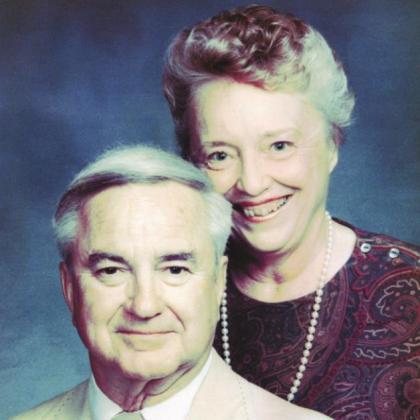Technology could be the link that’s been missing in finding out who murdered Russell and Shirley Dermond eight years ago, but Putnam County Sheriff Howard R. Sills knows an even better way.
Two years ago, Sheriff Sills said he had met with FBI agents to discuss how technology that’s now being used to solve and prosecute cases could help in the Dermond case. In early May 2021, Sills told The Eatonton Messenger reporter he was optimistic the technology will finally be the lead that will solve the case that has plagued him.
And as this year’s anniversary of the murders returned, Sills said new data had come in.
“Just last week, I received some data, primarily cell phone data, that we have been waiting on for some time,” Putnam’s veteran sheriff said Friday via text message. “That data was loaded down into a program the FBI has and they are assisting us in analyzing the data now. The technology we are using was not in existence back in 2014.
“I don’t want to create an impression that I have acquired some silver bullet, but this is yet another tool we are using trying to find out who perpetrated these heinous crimes,” he continued, then repeated what he has said many times since the murders: “What we need more than anything is for someone to call us and tell us who is responsible for this savagery.”
Each year, the Kentucky Derby weekend marks the anniversary of the slaying of Russell Dermond, 88, and his wife, Shirley, 87. In early May 2014, they had accepted an invitation to attend a Kentucky Derby Day Party at the home of some friends, but never showed up at the party. When the couple never showed up, their friends became concerned and repeatedly tried to phone the Dermonds to no avail. So, the hostess asked a mutual friend to take some of the roses from the party over to the Dermonds.
When the friend went to their house and received no answer, he looked through a window and saw Russell Dermond’s lifeless, decapitated body in the garage. Shirley Dermond’s body was discovered more than a week later by fishermen in Lake Oconee, about six miles from the couple’s lakeside home in Great Waters.
The double murder case seems to remain a mystery in every aspect to criminal investigators as well as the Dermonds’ friends, family and community. Sills has said the difference in this case and the other homicide cases he worked is that he can find no criminal nexus to the victims. “These people lived a very simple life,” he said, noting he could not even find a motive.
The Dermonds were parents of four, grandparents of nine, sweethearts in the 1940s who were married 68 years when they died. They were New Jersey natives who lived in Atlanta for many years before moving to Great Waters in 1999. Shirley was elected president of the Eatonton Duplicate Bridge Club; she also loved working crossword puzzles and was a gardener. Russell was a veteran of the US Navy and served in WWII. He loved golf and stayed active daily walking the course or the neighborhood.
Early in the investigation, Sills said the killer or killers had some familiarity with the lake; and based on the lack of evidence of forced entry into their home or any sign of a struggle, Sills said he also believes the Dermonds knew the people who took their lives.
The murders were brutal. Sills said evidence of gunshot residue on Russell Dermond’s shirt reveals he was shot in the head and then beheaded postmortem with a knife. Mrs. Dermond had been beaten to death with something like a hammer, then tied to cinder blocks and disposed of in the lake.
Russell Dermond was last seen alive on the Thursday before his body was found on Tuesday, May 6. According to Sills, Mr. Dermond went to The People’s Bank, then went to Publix where he bought bread and cucumbers and picked up some prescriptions for his wife’s upcoming cataract surgery.
There is absolutely no evidence that either of them were killed inside their house on Carolyn Drive in the gated community; neither is the exact time and date of their deaths known.
Sills said Mrs. Dermond was working the crossword puzzle from the last issue of USA Today, which was left opened on the kitchen table. The bed was unmade, and Mr. Dermond was still in his pajamas, but Mrs. Dermond’s body was completely dressed. “But we learned through their children that this was common for their daily habits,” Sills explained. “So, based on (those factors), the emails that were received, the crossword puzzle, and the newspapers in the driveway, we have a window of about 48 hours.”
Neighbors and residents of the gated community told reporters in the past that, although they lock their doors these days, they still feel safe because they believe the Dermonds were targeted.
For years, Sills continued to work the case every week, often traveling to other states to follow up on a lead. But these days, the leads don’t come in nearly as often, he said. Yet the boxes of files remain stacked in his office, along with the hope that the newly-received data may reveal the evidence needed to solve the case.

